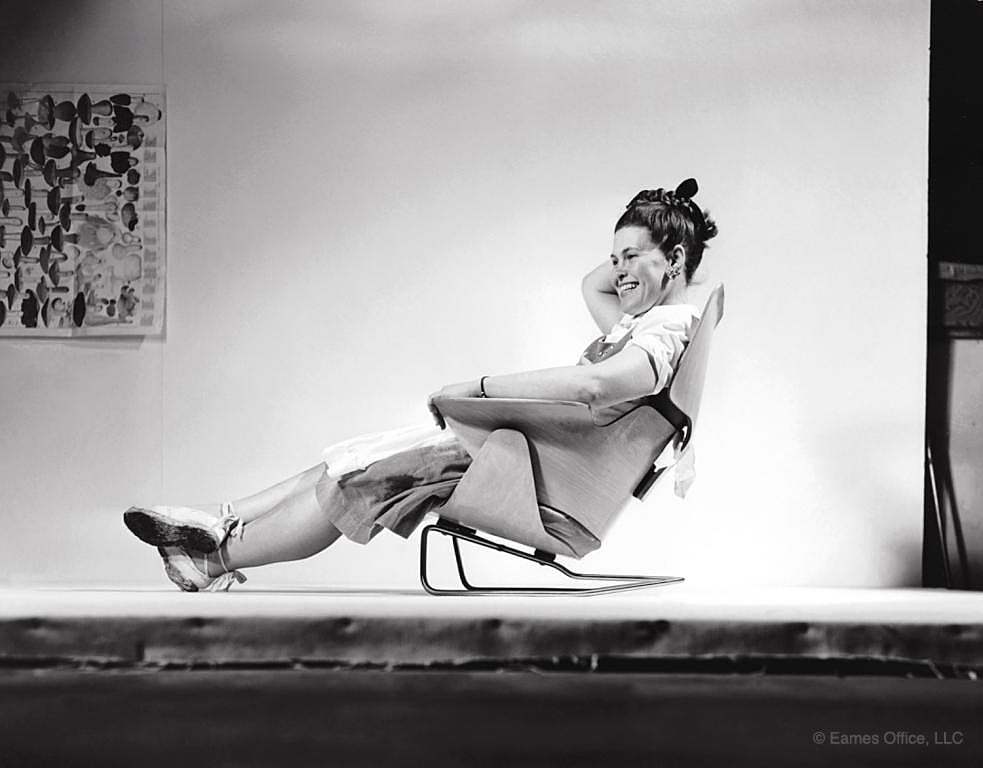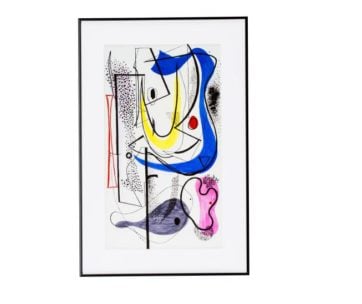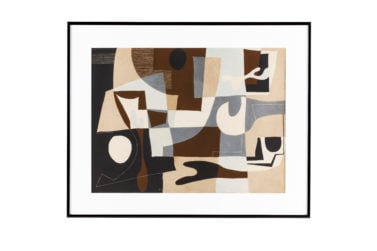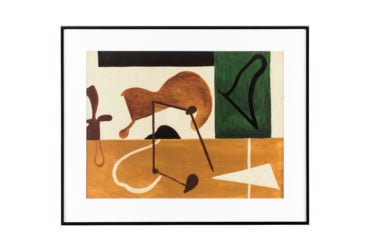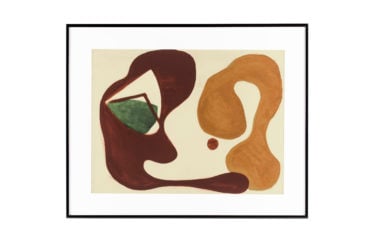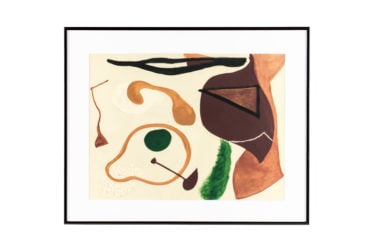Ray Eames' Paintings
The Artist
Ray Eames was born in Sacramento, CA in 1911. After graduating from high school she moved to Upstate New York to attend a finishing school, only attending for two years before moving to New York City. There, she met her mentor Hans Hofmann with whom she studied for six years. She learned about modernist theories relating to color and form in nature and was a founding member of the American Abstract Artists group. An active member, she often protested against conservative galleries and promoted avant-garde works.
Ray then enrolled in the Cranbook Academy of Art in Michigan where she first crossed paths with Charles Eames and the two were soon married.
A few years into Ray’s partnership with Charles, she began making fewer paintings—at least in the traditional sense. Charles commented on this during one of his 1952 presentations, saying:
“My wife is a painter, and a very good one. . .and we’ve been working together for, oh, twelve years now, I guess. . . let me say, her friends of the American Association of Abstract Artists take a, sort of, very dim view of the fact that Ray hasn’t exhibited any paintings or, actually, hasn’t done a lot of any painting lately, in the sense that you can paint something and put it into a frame.
Now, actually, I think that she has been consistently functioning as a painter, and has functioned as a painter on and above the call of duty, because, actually, her hand and everything that makes it so is a part of everything we do, just as much of architecture as anything else. . .
And if you’re thinking of what some color looks like on a building, or what some spot of color in relation to something else. . .this is not it. [She] is really functioning as a painter, sort of, you know, extra and beyond perception.”
Ray clearly agreed with what Charles said. In 1982, when a young woman asked her, “Mrs. Eames, how did it feel to give up painting?” Ray succinctly replied, “I never gave up painting; I just changed my palette.”
This small collection of paintings by Ray exemplifies the mastery of color and form that Ray was known for.
